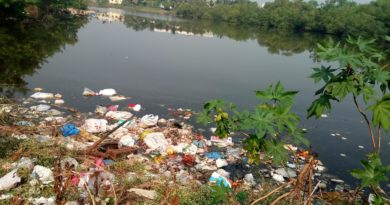The environment is a national issue | Jayanthi Natarajan
To view environment protection through an ideological or political lens will only spell its doom
As a former Environment Minister in the United Progressive Alliance (UPA) dispensation, I feel that environment issues should be above political dissonance, and to this end attempt to highlight critical facts which need to be flagged for public knowledge. To politically weaponise environmental issues is unproductive and unacceptable.
How India fares
It may be politically convenient — but not presenting the complete picture — to express shock at India being ranked at “177 out of 180 countries” in the Environmental Performance Index Report. Besides, in the June 2020 EPI, India’s rank stands improved at 168, not 177 which is the 2018 rank.
The Environmental Performance Index has been developed by two U.S. universities (Yale and Columbia) in collaboration with the World Economic Forum and European Commission and available ranking shows India at 118 in 2006, 123 in 2010, 155 in 2014 and 177 in 2018, thereby giving a message opposite to that sought to be conveyed, regarding our standing at 177 in 2018.
Also, the experts in the two universities conclude: “… the 2008 ranking suggests that wealth is a major determinant of environmental success.” Any balance between the environment and development needs to be struck within India and based on our priorities, and not some international index.
Further, the environment index cited by Ms. Gandhi (Stop the dismantling of environmental rules, The Hindu, Editorial page, August 13, 2020), shows a drop of 37 points (namely six points a year) in six years of UPA rule — and 22 points in 4 years (4.5 points a year) — under the present rule. The statistics are self-explanatory.

Political record
Pointed reference is made to the Narendra Modi government’s alleged preoccupation with “crony capitalism” and implementing “ease of doing business” to the detriment of the environment. This charge ignores the record of UPA governments, when important Group of Minister Committees were set up to implement ease of doing business, as also a special Monitoring Cell in the Cabinet Secretariat. Regardless of affiliation, every government faces this balancing challenge.
Further, the link between the great winter smog and pollution in North India, and the present draft EIA draft is not reasonable, since winter pollution in North India did not begin in 2014, after Narendra Modi was elected. In point of fact, the winter smog and pollution in North India exemplify the anomalies of federalism, where the imperatives of the Centre and States differ. There are also problems of environmental laws which are effective in principle, against point sources like industries — but not against agriculture-related pollution such as stubble burning or public usage pollution relating to vehicular and household sources. Undoubtedly, big industry has erred grievously in polluting our environment, and the government needs to take stringent steps against violators.
Ms. Gandhi writes about the problems of Adivasis. However, this problem did not arise in just the last few years. The UPA governments were unable to frame subordinate legislation and implement the Forest Rights Act effectively for eight long years, even in Congress-ruled States. In fact a major dilution of the Forest Rights Act was spearheaded by the Prime Minister’s Office in the UPA dispensation, and office memorandums formalising the dilution were issued despite objections from some quarters. ‘Forests’ was a State subject until transferred to the Concurrent list by the 42nd Amendment Act. However, de facto, the powers of the State governments continue, which is why, regardless of political affiliation, State governments hesitate to fully implement the Forest Rights Act.
Focus on deforestation
Deforestation ought to be a primary concern of any right-thinking government. Forest clearances for mining and industries, while major, are not the only causes of deforestation. Population pressure due to which the slash-and-burn (or jhoom cycle) has reduced in forest areas from 17-20 years to two-three years giving no time for forest regeneration, and creeping conversion of forest to cultivated land are both major drivers of deforestation; there is also the increasing use of timber for household and industry purposes. However, while diversion of forests for mining and industry is regulated by law and challenged in courts, the other major drivers are not even discussed.
‘Nirmal Ganga’ can be achieved by zero discharge of effluents and domestic sewerage, but ‘Aviral Ganga’ can only be achieved by constant balancing between irrigation needs of agriculture and potable water for cities on the one hand and the environmental flow of the river on the other.
Crucial dimensions
The balance of imperatives between the environment and poverty eradication, and the critical need to harmonise the working of the central, State, and local governments, as also intelligence, monitoring and compliance with law are vital dimensions of environment preservation.
To address environment protection from the standpoint of ideological or political mooring is to sound the death knell of our environment. The environment is a national issue which requires the unwavering participation of all governments, and all citizens, regardless of political affiliation.
Jayanthi Natarajan is a former Union Environment Minister
Originally published by The Hindu




